Self-Sustainable Wearable Textile Nano-Energy Nano-System (NENS) for Next-Generation Healthcare Applications
- PMID: 31871857
- PMCID: PMC6918113
- DOI: 10.1002/advs.201901437
Self-Sustainable Wearable Textile Nano-Energy Nano-System (NENS) for Next-Generation Healthcare Applications
Abstract
Wearable electronics presage a future in which healthcare monitoring and rehabilitation are enabled beyond the limitation of hospitals, and self-powered sensors and energy generators are key prerequisites for a self-sustainable wearable system. A triboelectric nanogenerator (TENG) based on textiles can be an optimal option for scavenging low-frequency and irregular waste energy from body motions as a power source for self-sustainable systems. However, the low output of most textile-based TENGs (T-TENGs) has hindered its way toward practical applications. In this work, a facile and universal strategy to enhance the triboelectric output is proposed by integration of a narrow-gap TENG textile with a high-voltage diode and a textile-based switch. The closed-loop current of the diode-enhanced textile-based TENG (D-T-TENG) can be increased by 25 times. The soft, flexible, and thin characteristics of the D-T-TENG enable a moderate output even as it is randomly scrunched. Furthermore, the enhanced current can directly stimulate rat muscle and nerve. In addition, the capability of the D-T-TENG as a practical power source for wearable sensors is demonstrated by powering Bluetooth sensors embedded to clothes for humidity and temperature sensing. Looking forward, the D-T-TENG renders an effective approach toward a self-sustainable wearable textile nano-energy nano-system for next-generation healthcare applications.
Keywords: healthcare; nanoenergy nano‐system (NENS); self‐sustainable; textiles; triboelectric.
© 2019 The Authors. Published by WILEY‐VCH Verlag GmbH & Co. KGaA, Weinheim.
Conflict of interest statement
The authors declare no conflict of interest.
Figures

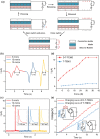
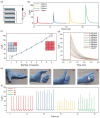
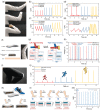
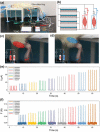


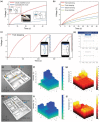
References
-
- Tian X., Lee P. M., Tan Y. J., Wu T. L. Y., Yao H., Zhang M., Li Z., Ng K. A., Tee B. C. K., Ho J. S., Nat. Electron. 2019, 2, 243.
-
- Chu B., Burnett W., Chung J. W., Bao Z., Nature 2017, 549, 328. - PubMed
-
- Zhou Z., Li X., Wu Y., Zhang H., Lin Z., Meng K., Lin Z., He Q., Sun C., Yang J., Wang Z. L., Nano Energy 2018, 53, 501.
-
- Shi Q., Qiu C., He T., Wu F., Zhu M., Dziuban J. A., Walczak R., Yuce M. R., Lee C., Nano Energy 2019, 60, 545.
LinkOut - more resources
Full Text Sources
Miscellaneous
